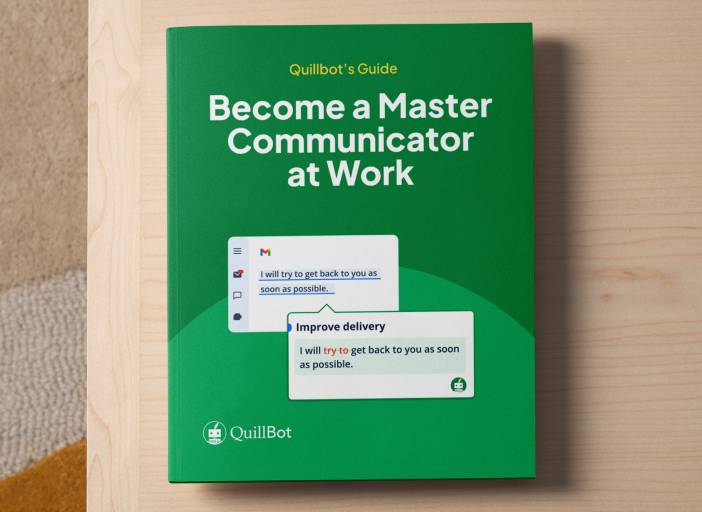How to Easily Write Poems with an AI Poem Generator
Poetry isn’t just for published authors or literary romantics; it’s also for anyone looking to add a creative twist to everyday moments. Maybe you’re planning a toast, writing a birthday card, or roasting a friend with a lighthearted verse. A custom poem can make it more personal and a lot more fun—if you can actually write one.
If not, AI poem generators have you covered. They make it easy to create something original, even if you’re short on time or inspiration. Writers might challenge themselves to continue or rewrite an AI-generated poem in their own style, using it as a springboard for experimentation. Teachers, too, can turn it into a learning tool by generating poems from vocabulary words or historical topics to make lessons more creative.
Whatever the use, QuillBot’s AI poem generator is a quick and playful way to turn ideas into verse.
How to write a poem
If you’ve never written a poem before, don’t overthink it. A poem doesn’t have to be perfect or follow complicated rules; it just needs to capture a feeling, a moment, or a thought in a way that feels true to you. Here’s a simple way to get started:
1. Pick a theme or idea
Focus on one thing: a memory, a person, a mood, or even a single word like “rain,” “home,” or “tired.” It’s easier to write when you have a clear starting point rather than trying to capture everything at once.
2. Choose a tone and form
Do you want your poem to be joyful, thoughtful, funny, or sad? Then consider the structure: try a playful limerick for something humorous, a haiku for a simple moment, or free verse if you want complete freedom. Sonnets work great for deep emotions, while simple rhyme schemes (like ABAB) can make your poem feel more musical. Don’t be afraid to experiment since each form gives your words a different personality.
3. Write a few lines
Begin with 3–5 lines. Don’t worry about structure yet, just get your thoughts down. For example, if your word is “rain,” you might write: “Rain taps against my window / Like tiny fingers asking to come in.” Read them out loud to hear how they flow.
4. Revise
Make small adjustments to improve rhythm or clarity. If a word feels out of place, swap it. If a line feels flat, try rephrasing it. Remember, your first poem doesn’t need to be a masterpiece; it just needs to be yours.
Now you know the basics, but perhaps you still need a creative jumpstart. Maybe you’re stuck on Step 1 and can’t pick a theme, or you’ve got a great idea but the words just aren’t flowing. AI poem generators can bridge that gap, giving you something concrete to build on or revise.
Using an AI poem generator
Using an AI poem generator is simple, even if you’ve never written a poem before. In just a few steps, you can create a fun anniversary haiku for your partner or a playful rhyme to go with a thank you message. Here’s how you can use QuillBot’s AI poem generator:
1. Provide your input
Type in a word, phrase, or theme, like “celebration,” “quiet mornings,” or “feeling stuck.” You can also include a mood (hopeful, romantic, or funny) or a specific occasion to guide the tone. Let’s say you want to leave a sarcastic note for your roommate who never does the dishes. If they’ve got a sense of humor, you might try something like this:
Write a sarcastic couplet for a roommate who never does the dishes.
Output:
Dirty dishes pile up, you’re never in sight—
Are you allergic to soap, or just afraid of light?
2. Tweak your results
Want to go bigger or sillier? You can refine the tone, rhythm, or structure until the poem hits just the right note.
Make it more absurd or exaggerated for comedic effect. Make it 4 lines long.
Output:
Of course! Here’s a four-line, absurd, and comedic version:
Plates stack so high, I need hiking gear each night—
Did you think they’d evolve and wash themselves out of fright?
Forks form a fortress, spoons plan their escape,
Your dish-doing skills must be lost in deep space!
3. Enjoy your poem
Happy with the result? Copy it, share it, or personalize it further. Use it in a greeting card, social post, or creative project; wherever a bit of poetry fits. As for that absurd little roast for your roommate, just stick it on the fridge and see how long it takes before the dishes magically disappear.
Frequently asked questions about AI poem generators
- What types of poems can AI generators create?
-
AI poem generators can create many different types of poems, from haikus and limericks to sonnets, free verse, couplets, and beyond. By specifying the mood, theme, or form you want, you can guide the AI to create a poem that suits your style and purpose.
Whether you’re a teacher, writer, or just curious, QuillBot’s AI poem generator makes poetry accessible to everyone. Start experimenting with your poems now.
- What are some practical uses for AI-generated poems beyond greeting cards and toasts?
-
AI-generated poems can be used for more than just personal messages. Teachers can make lessons more engaging by using them in vocabulary or history classes. They’re also great for adding creative touches to social media posts and marketing materials. Additionally, they offer an easy way to try out different poem styles and forms.
QuillBot’s AI poem generator can help you bring your ideas to life and create personalized poems in seconds—no experience needed.
Cite this Quillbot article
We encourage the use of reliable sources in all types of writing. You can copy and paste the citation or click the "Cite this article" button to automatically add it to our free Citation Generator.
QuillBot. (2025, July 22). How to Easily Write Poems with an AI Poem Generator. Quillbot. Retrieved August 11, 2025, from http://qbot.seotoolbuy.com/blog/ai-writing-tools/how-to-use-ai-poem-generator/

